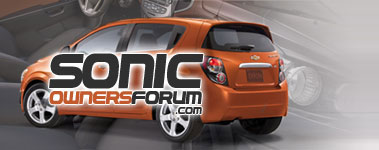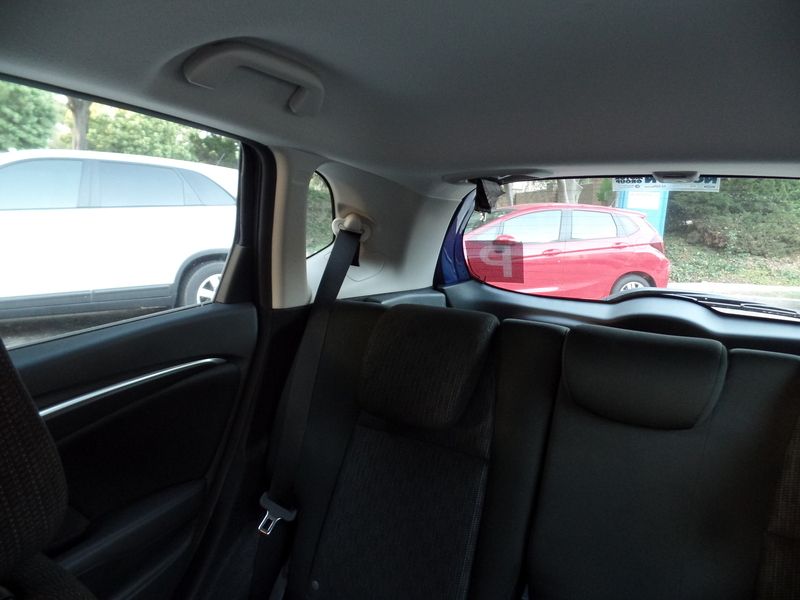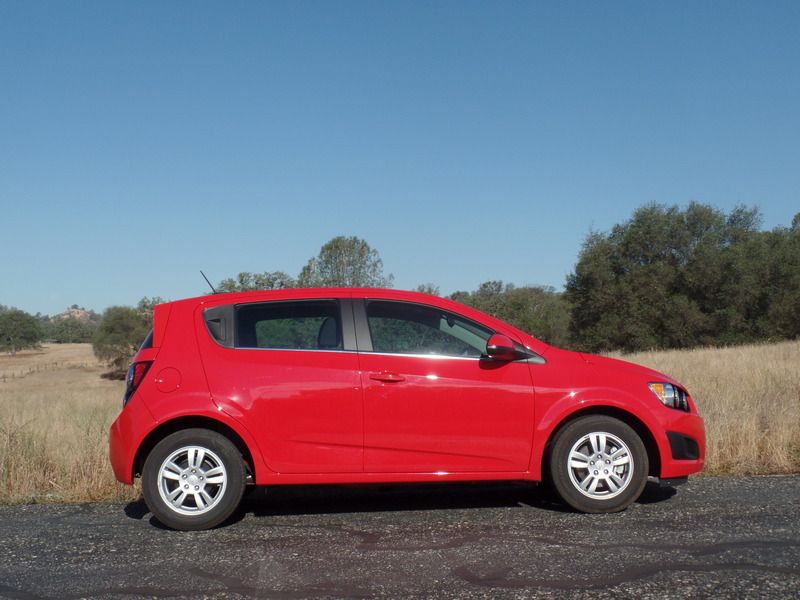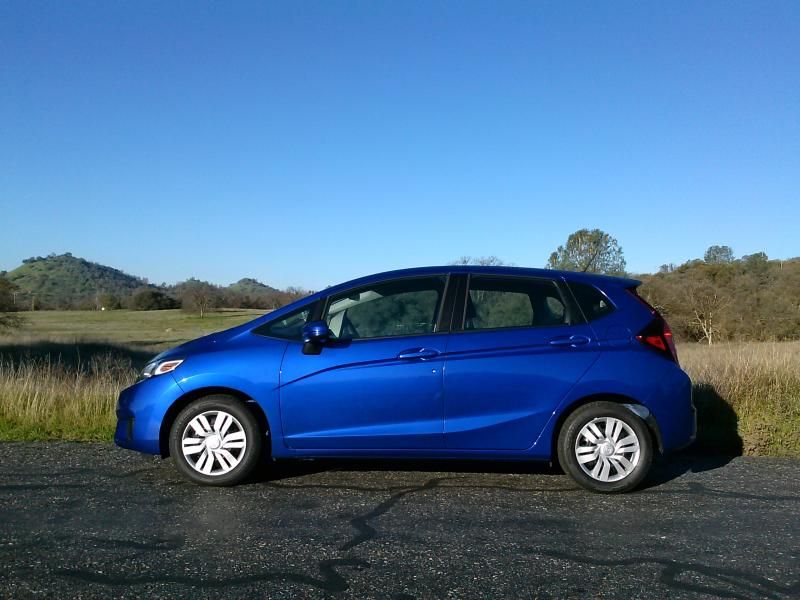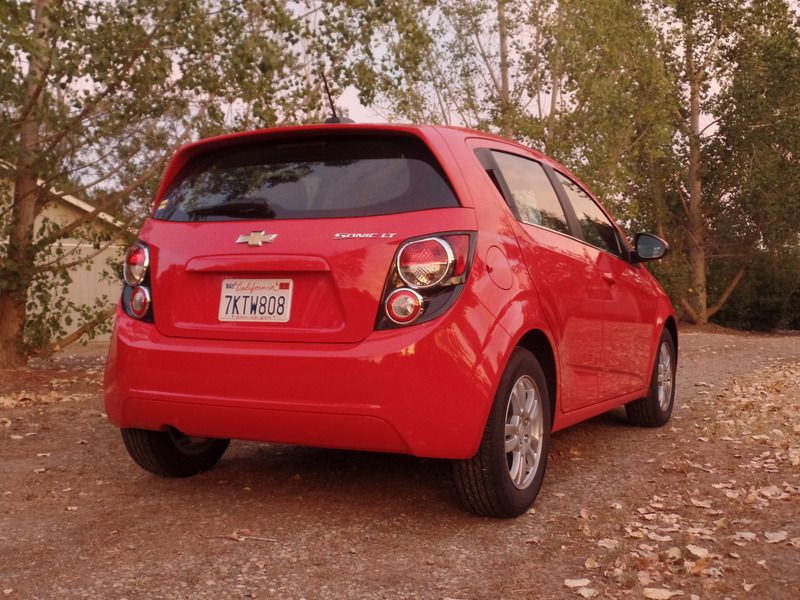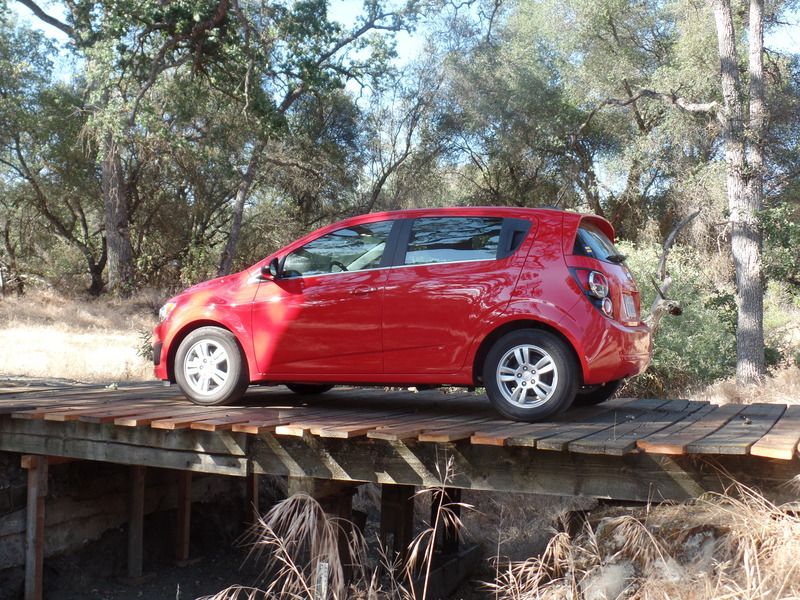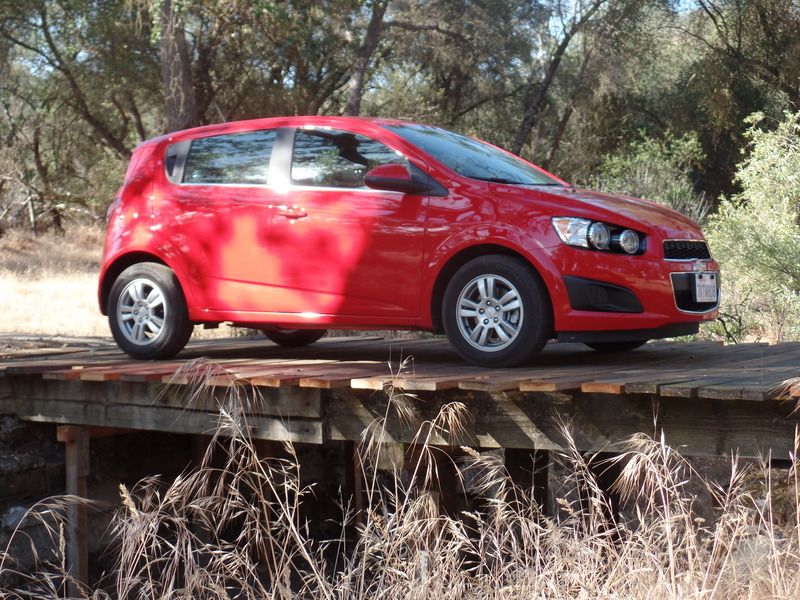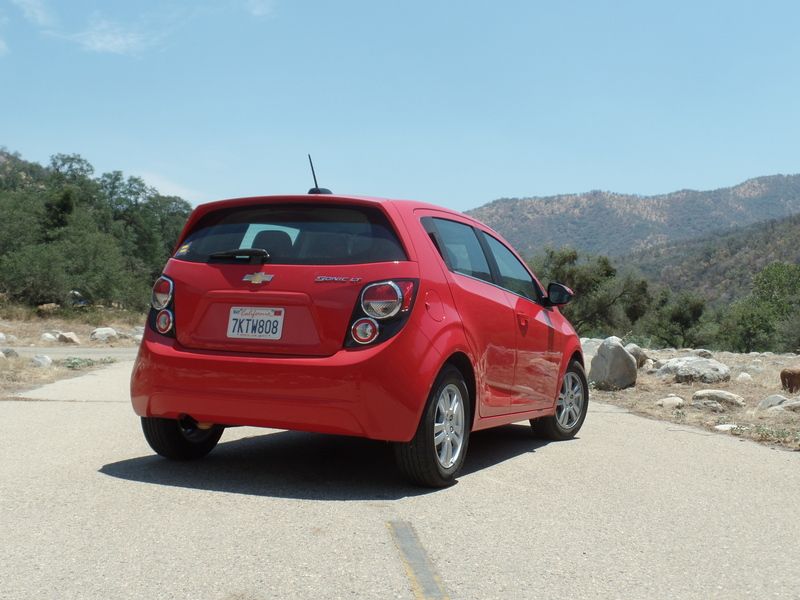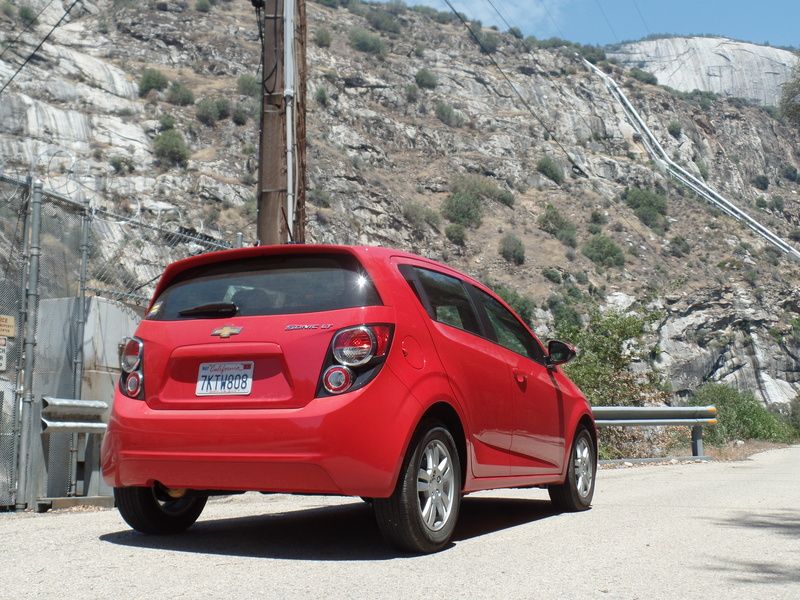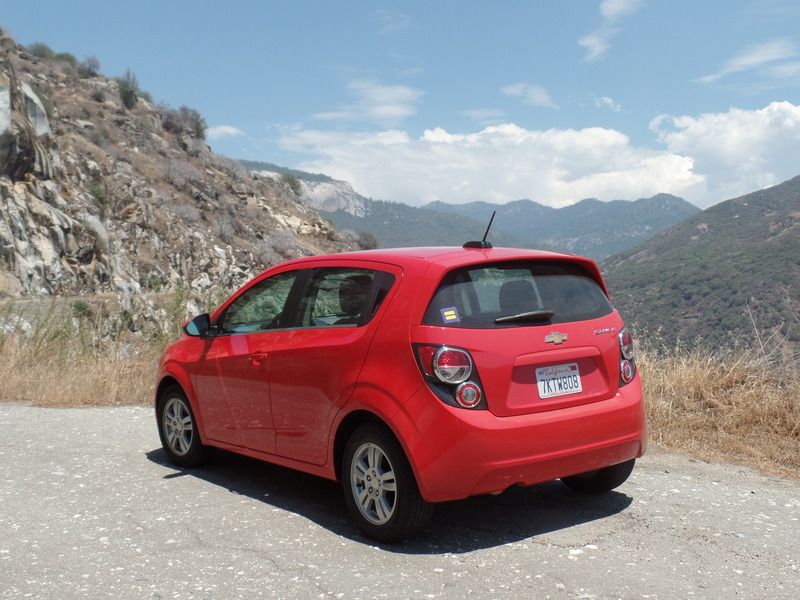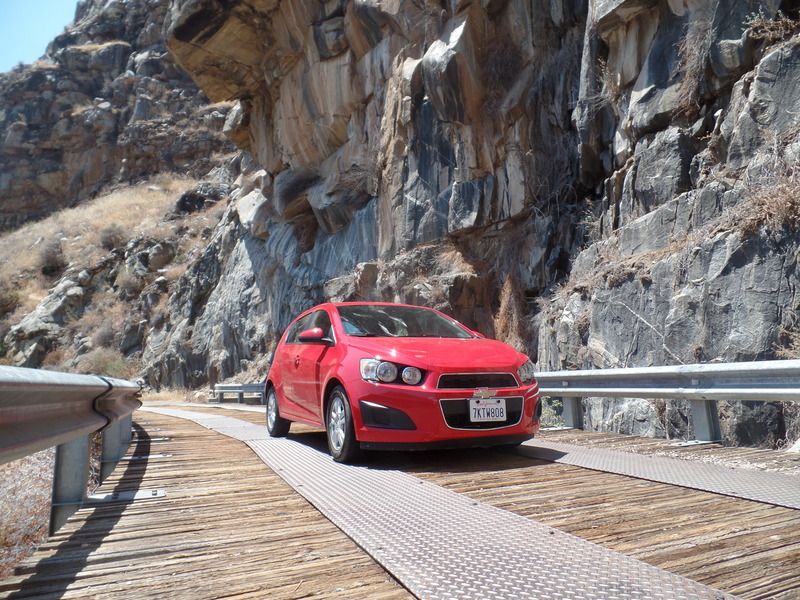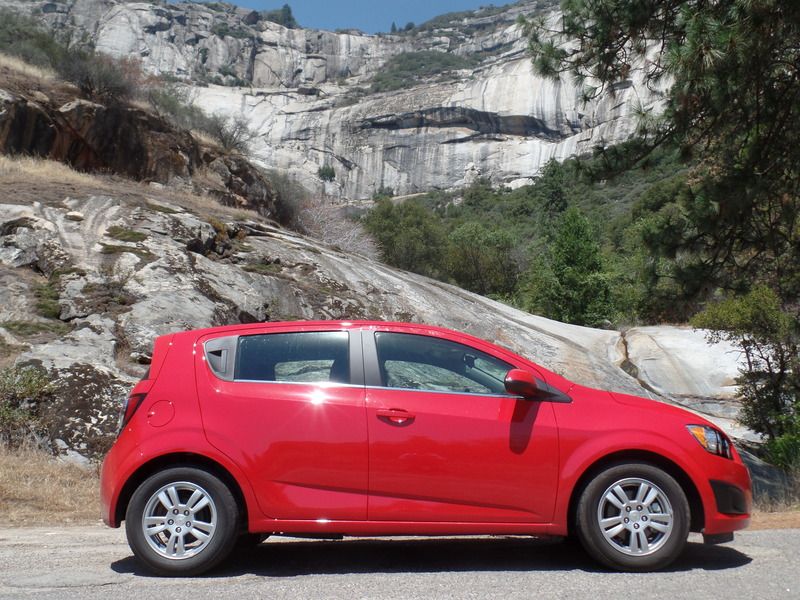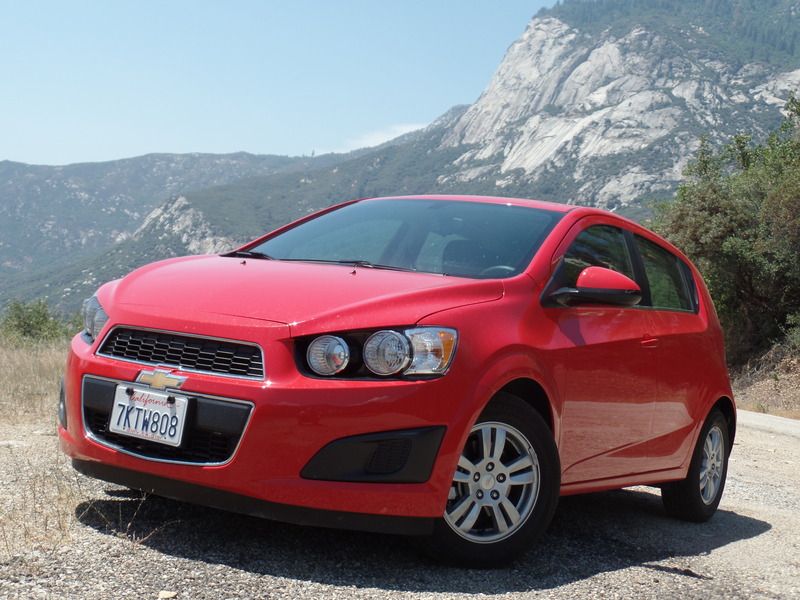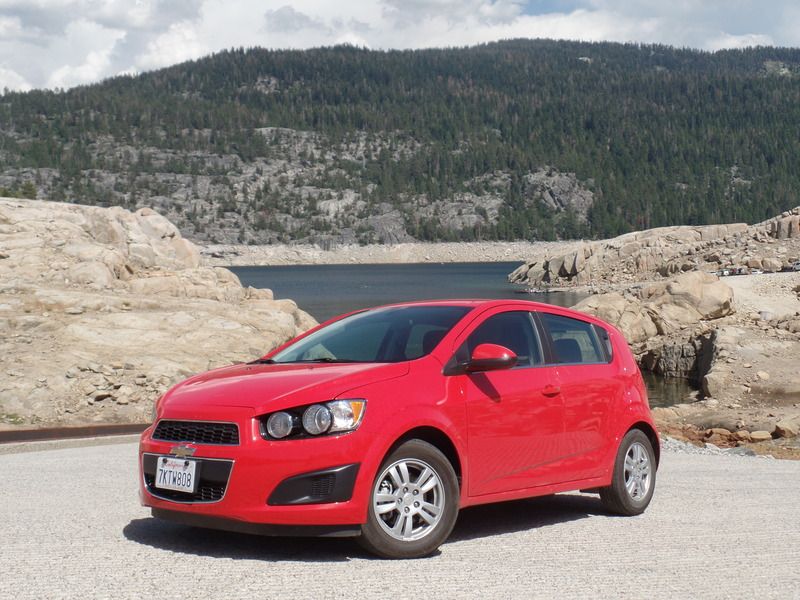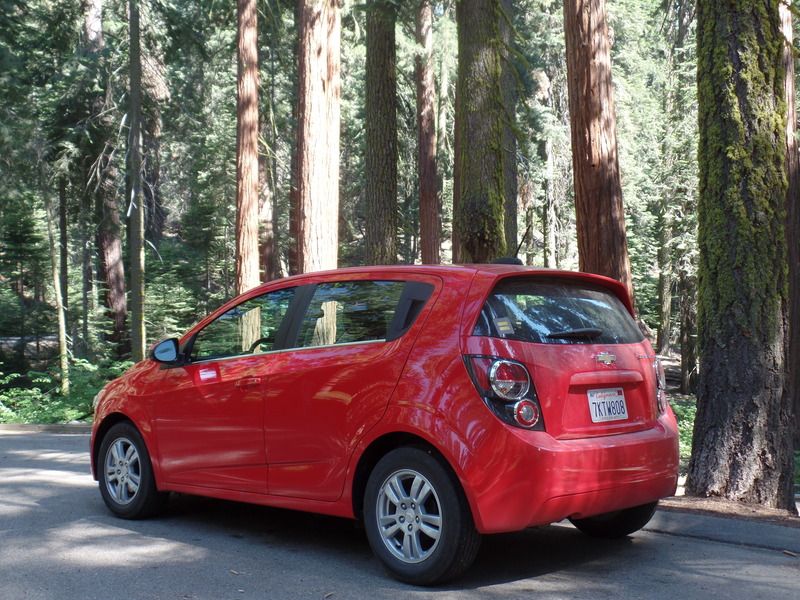This past weekend for 4th July, I visited my parents up north in the High Sierra near Yosemite. One of my biggest thrills is renting cars and taking them on this 700 mile round-trip. The journey involves a variety of landscapes; LA freeway traffic, long, mind-numbing stretches of flat freeway, steep mountain grade, curvy roads, and some dirt sections. It's a perfect way to test out any car.
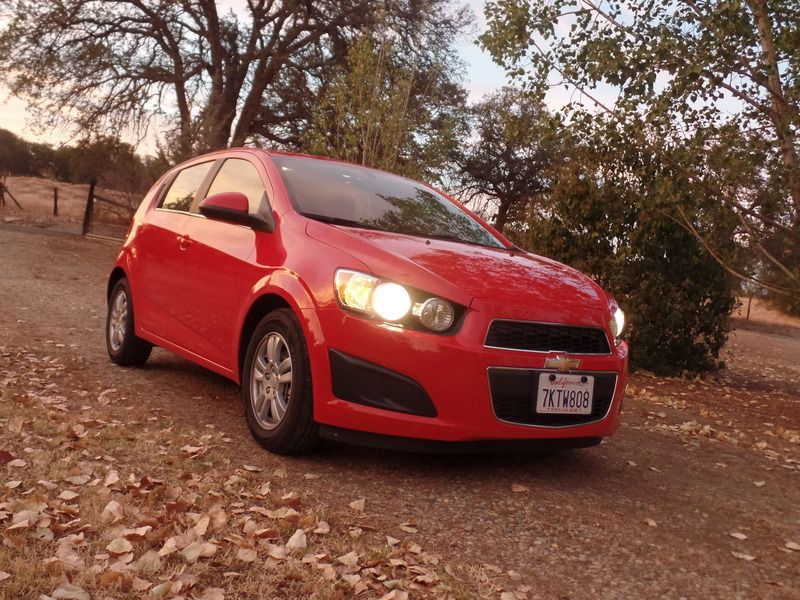
I've taken my 2015 Fit a few times up here, but for $9/day at Alamo, it was too hard to resist doing a rental. Going down there, they had a few dull choices on the lot; Accent, Altima, Rio, Versa, and...what's this at the end....a red hot 2015 Sonic LT hatch? Sold!
Minus the automatic, it's the exact Sonic that I wanted to buy last year when I obtained the Honda, and may be the car to replace it too.
It was the perfect chance to test out what owning a Sonic would be like, and to compare it to the Honda, since they are direct competitors. Here we go for an unofficial comparison test after driving both the same loop
PERFORMANCE:
The initial horsepower numbers are close for both; 130hp on the Fit and 138 on the Sonic. But the little 1.8 in the Sonic just feels so much more powerful. It does have higher torque numbers to prove it, and despite the Honda having sophisticated direct injection, the Chevy feels much more refined. While the Honda shakes and rasps at idle, the Sonic's engine note is a bare whisper. The quality of the noise is what makes the difference too. Under any acceleration, the Fit's motor sounds tinny and fragile. The Sonic feels more robust. Not only does the Sonic feel quicker, but the engine is more pleasurable to do business with. ADVANTAGE: Chevy
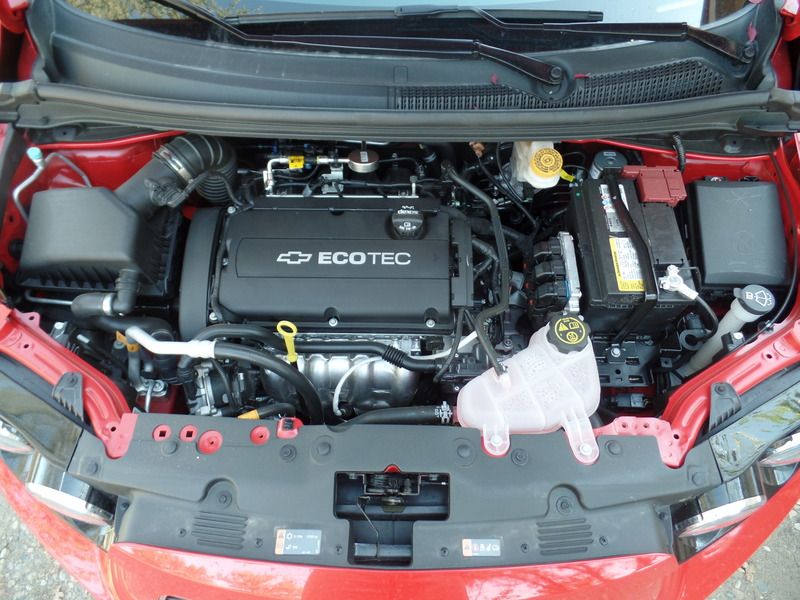
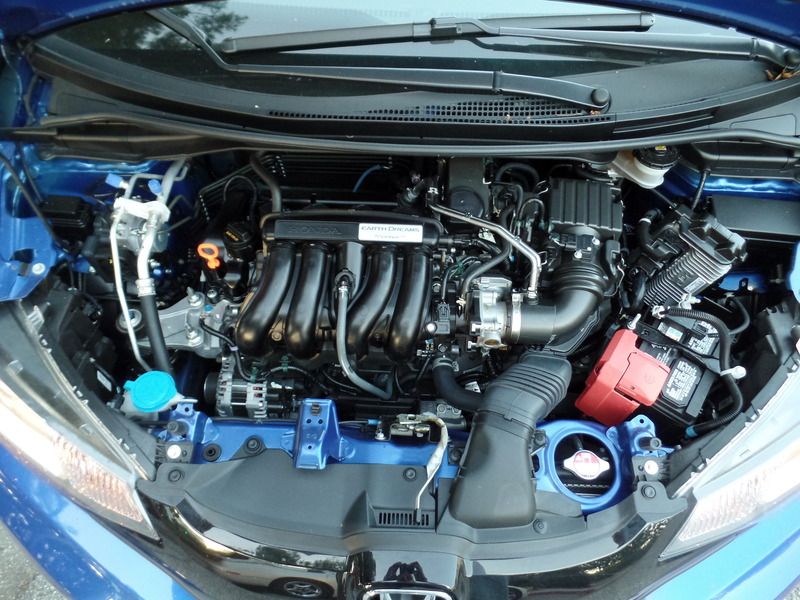
TRANSMISSION
Granted, my Fit is a manual and the Sonic was an automatic, so we're not comparing apples to apples here. However, the Fit's six-speed manual is a major weak point. Honda crammed the new six-speed into the same five-speed ratio spread from the 2013 Fit, making the gears short and constant shifting necessary. The sixth speed is almost impossible to tell apart from fifth gear and serves no purpose. At 65mph, the Honda's engine is screaming at 3200rpm in 6th. At least the clutch and shift action are silky smooth. The Sonic's automatic was seamless on how it did its business at most times. In crawling traffic, there was a continual struggle between second and third gear, and obvious gear hunting. Gears were also switched continually on steep, long grades as well. At least engine rpms were kept down to about 2500 rpm at 65mph. ADVANTAGE: Chevy
STEERING
The feel from both these cars was similar, and in fact, the three-spoke steering wheels were almost identical in design. Both were communicative and gave enough road feel without being numb. I'd say it's a tie
HANDLING
For economy cars, both are very good. The Ford Fiesta takes supremacy in this category, but the Fit and Sonic hold their own. Both have good road grip and minimal body roll. The Sonic did feel more skittish under hard cornering and understeer set on a little earlier. I did notice the back end would kick out a bit easier, which was unnerving some sharp curves. ADVANTAGE: Honda
RIDE:
Both these cars have identical setups; front independent with struts and rollbars and rear semi-independent with torsion beams. But what a difference in tuning. The Honda hops and leaps over any road imperfection and has more vibrations than a coin operated bed. The Sonic by comparison soaks up most bumps with ease, and rides like a much larger car. The Fit's ride just screams "penalty box!" ADVANTAGE: Chevy
FUEL ECONOMY:
The EPA ratings for both cars suggest that the Honda is the more economical and that proved to be true. On my initial 250 mile drive north on mostly freeway, the Chevy returned 37mpg 32mpg overall on the whole trip. The Honda has consistently given me 46mpg on that same long stretch and about 38 mpg on the entire journey. Despite that, the Fit's fuel tank is two gallons smaller than the Sonic and I noticed that fill-ups were just as common on both. ADVANTAGE: Honda
CARGO ROOM
For their size, hatchbacks are the most versatile vehicles. The Fit and Sonic are at the top of the pack in this regard, offering 16.6 cu ft and 19 cu ft respectively with the seats up, and the Honda having the lead with them down: 52.7 cubes vs 47.7. Regardless, both have easy to load hatches and usable, flat cargo space. Both have a hidden compartment under the floor, but at least the Sonic has a cargo cover that also folds away behind the back seats, nifty! The Honda does do without a cargo cover (seriously!?) but its seats do fold down easier. It's close but advantage to Honda for having more space
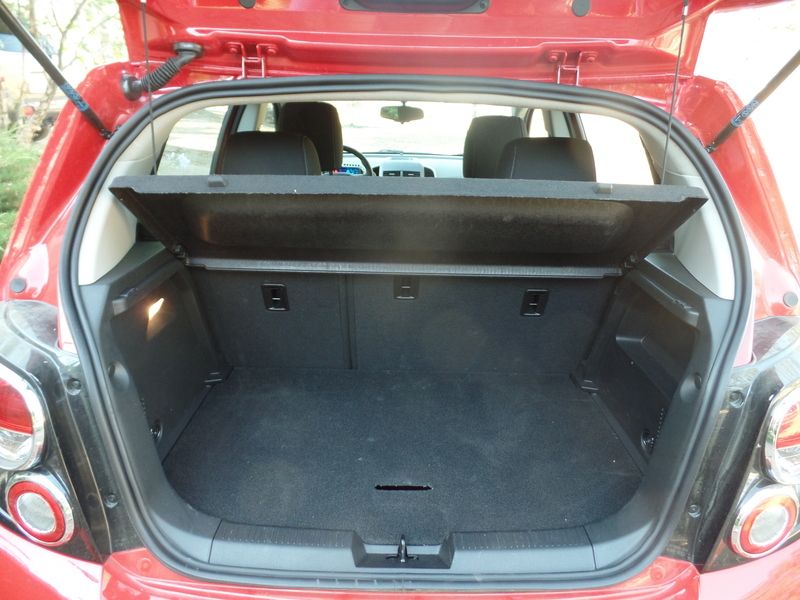


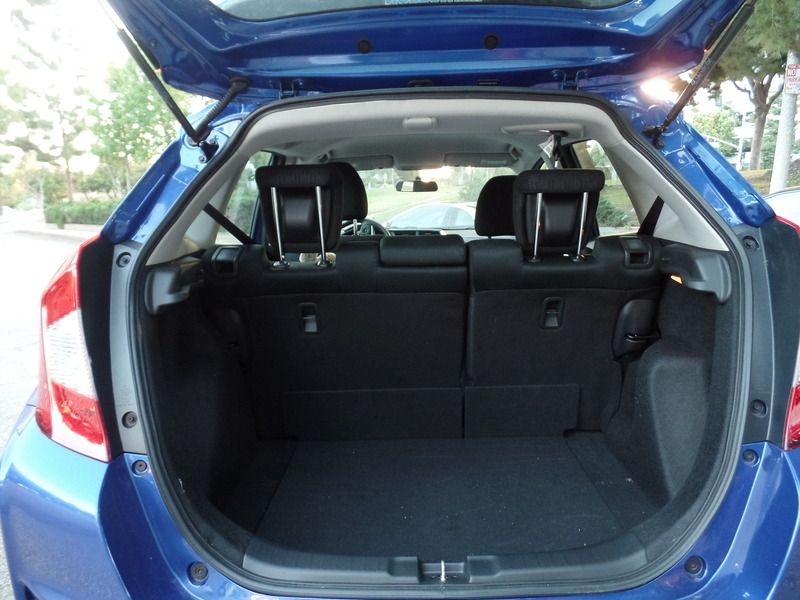
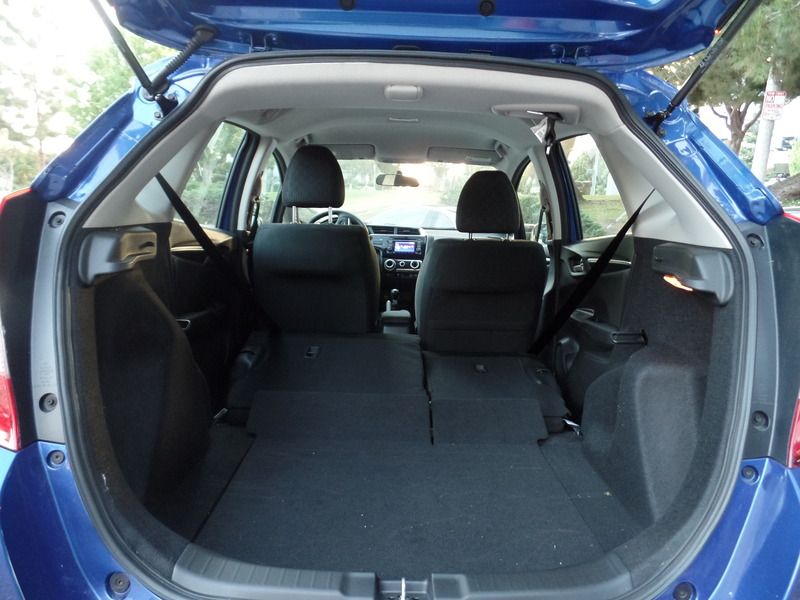
BACK SEAT
Honda's self-proclaimed Magic Seat is just that; magic! With 5 inches more rear legroom than the Sonic, and more than even a Honda Accord, the Fit's backseat is a pleasant place to be for a long drive. The Sonic is still commendable for a small car, but front seat passengers do need to move their seats forward to clear tall passenger's knees. ADVANTAGE: Honda
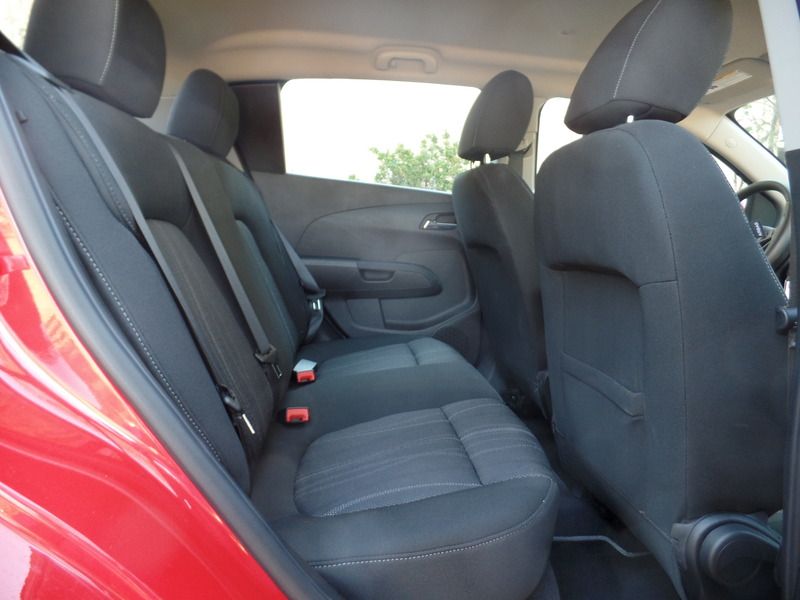

FRONT SEAT
Every magician has a secret to their trick, and Honda's dirty little cover up to their back seat is that the fronts just don't go back far enough. Knee room is tight for the front passenger, and an extra couple of notches for the seat to slide back would be appreciated. It's almost as though Honda focused too much on the back. Too bad, since I'm never back there. The Sonic's seats offer plenty of leg, elbow, and head room. Although the Fit's upholstery is nicer to the touch, the Sonic's front seats were still a comfy spot to pass the time. The Honda's armrest does conceal a storage area, but is set too low, while the Sonic's flip-down armrest is the right height, but is very hard for the elbow (strangely, the more affordable Spark's armrest is similar in design, but uses nicer materials and more forgiving) ADVANTAGE: Chevy
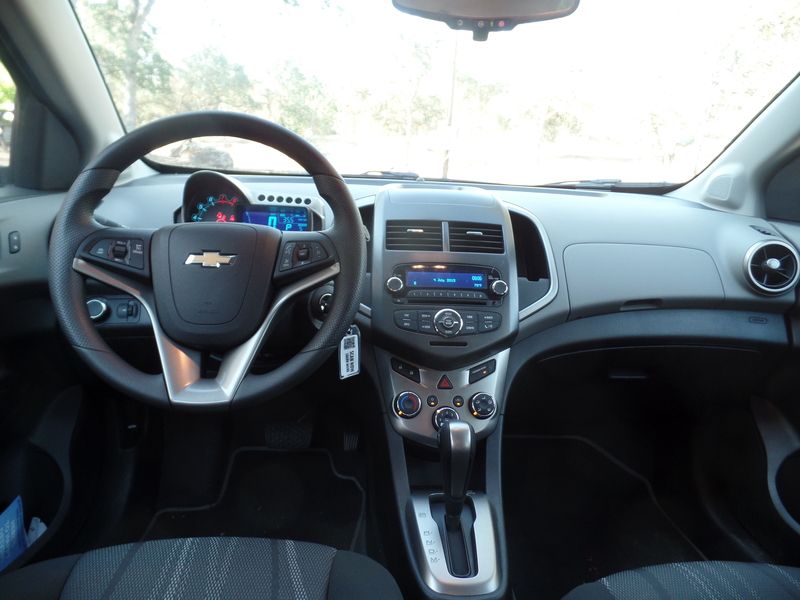
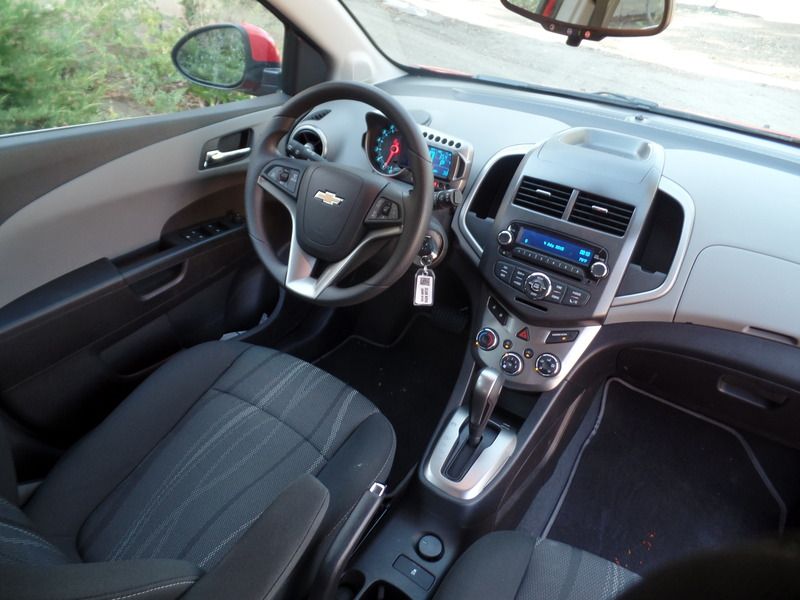
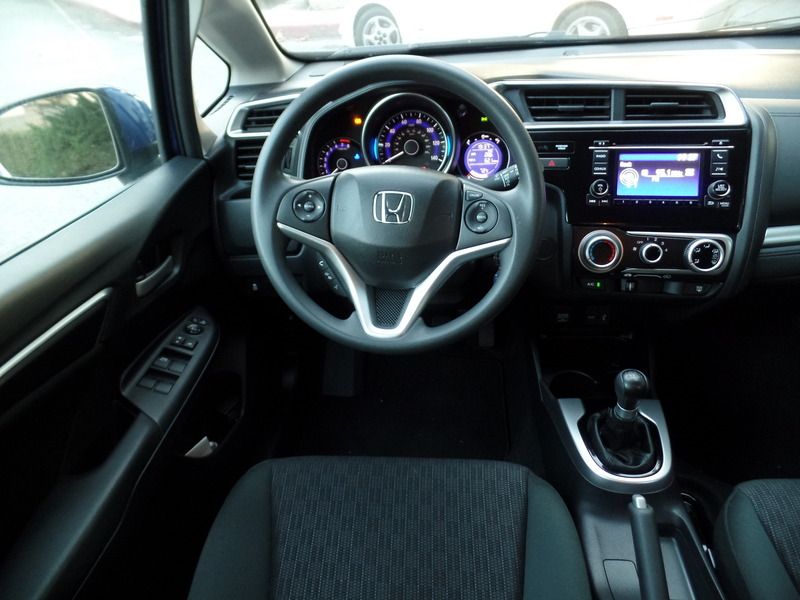
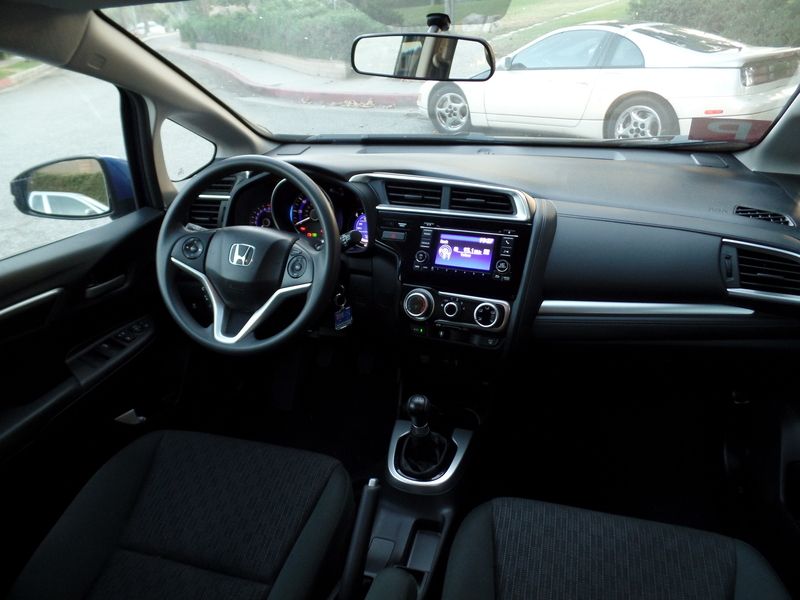
GAUGES
Both cars offer clear, concise info at a glance, but have completely different approaches. The Honda uses large gauges with blue backlighting, but cheesy surrounds on the speedometer that change color based on driving style. The Sonic has the motorcycle inspired tachometer and digital speedometer. It's not only unique and a focal point of the cabin, but it works. All necessary information is there on display with no fuss. ADVANTAGE: Chevy
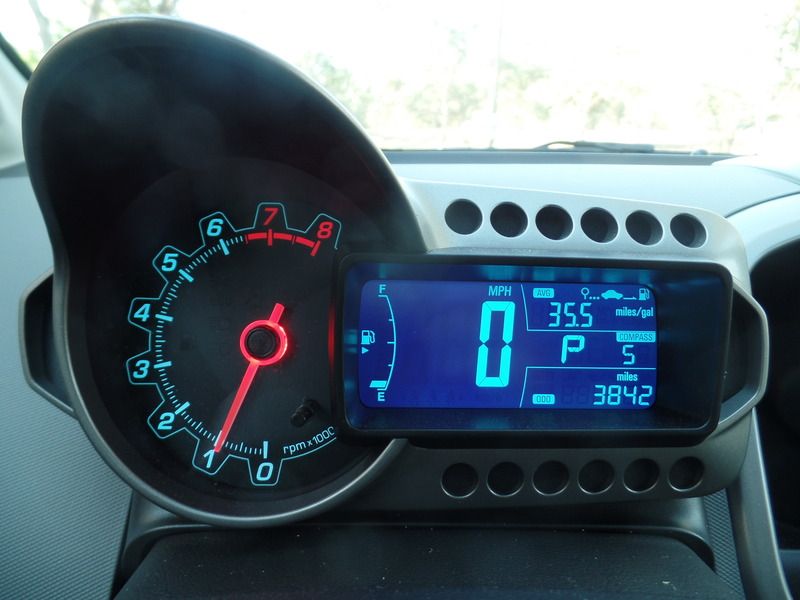
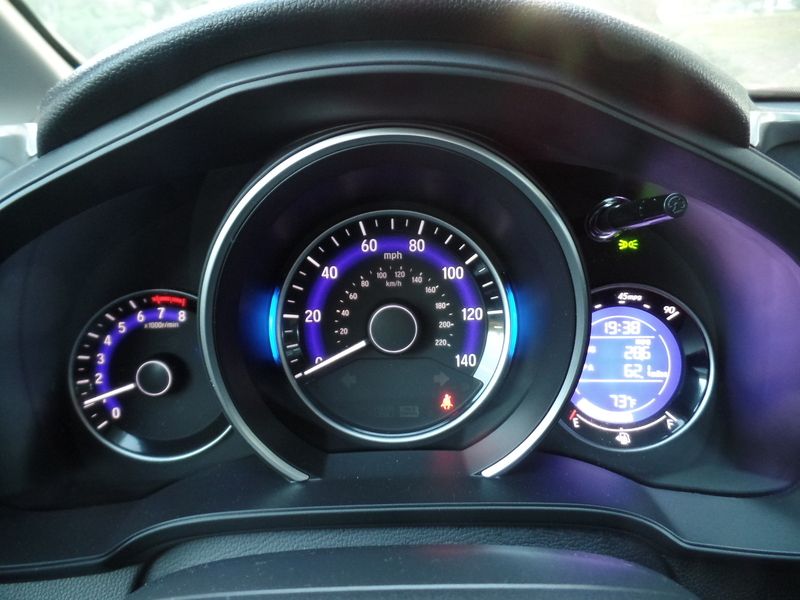
CONTROLS:
Once again, both cars are similar. Both have simple three knob ventilation controls and straightforward radios, along with knobs for tuning and volume, hallelujah! The Fit's stereo's display is crisper and easier to sort through menus, but everything in both cars is logical. It's a tie
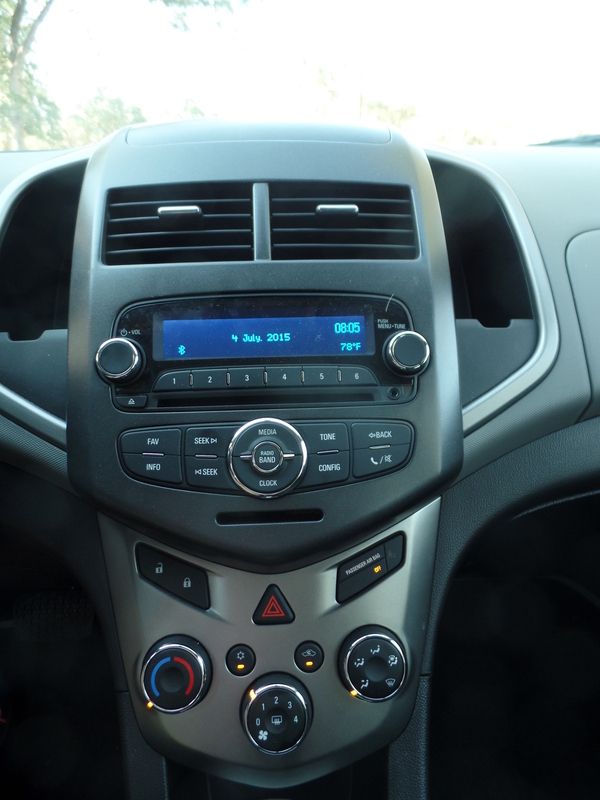
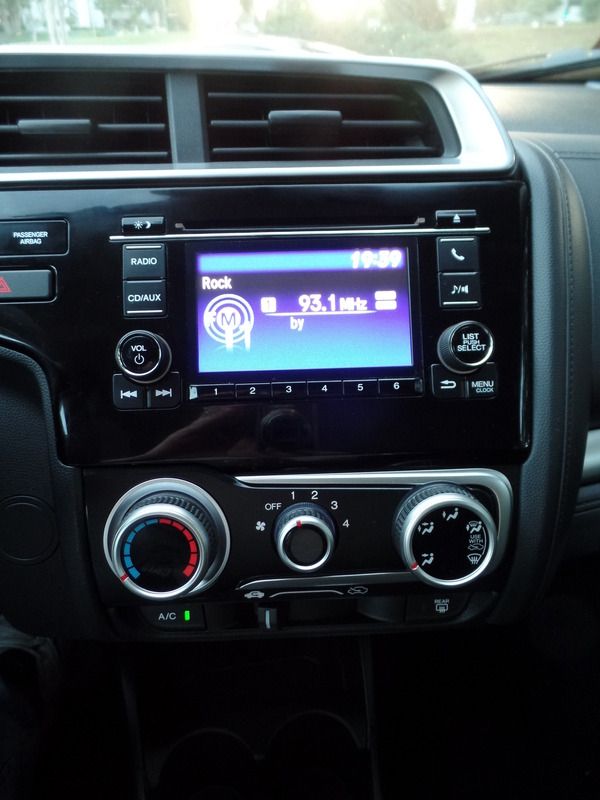

I've taken my 2015 Fit a few times up here, but for $9/day at Alamo, it was too hard to resist doing a rental. Going down there, they had a few dull choices on the lot; Accent, Altima, Rio, Versa, and...what's this at the end....a red hot 2015 Sonic LT hatch? Sold!
Minus the automatic, it's the exact Sonic that I wanted to buy last year when I obtained the Honda, and may be the car to replace it too.
It was the perfect chance to test out what owning a Sonic would be like, and to compare it to the Honda, since they are direct competitors. Here we go for an unofficial comparison test after driving both the same loop
PERFORMANCE:
The initial horsepower numbers are close for both; 130hp on the Fit and 138 on the Sonic. But the little 1.8 in the Sonic just feels so much more powerful. It does have higher torque numbers to prove it, and despite the Honda having sophisticated direct injection, the Chevy feels much more refined. While the Honda shakes and rasps at idle, the Sonic's engine note is a bare whisper. The quality of the noise is what makes the difference too. Under any acceleration, the Fit's motor sounds tinny and fragile. The Sonic feels more robust. Not only does the Sonic feel quicker, but the engine is more pleasurable to do business with. ADVANTAGE: Chevy


TRANSMISSION
Granted, my Fit is a manual and the Sonic was an automatic, so we're not comparing apples to apples here. However, the Fit's six-speed manual is a major weak point. Honda crammed the new six-speed into the same five-speed ratio spread from the 2013 Fit, making the gears short and constant shifting necessary. The sixth speed is almost impossible to tell apart from fifth gear and serves no purpose. At 65mph, the Honda's engine is screaming at 3200rpm in 6th. At least the clutch and shift action are silky smooth. The Sonic's automatic was seamless on how it did its business at most times. In crawling traffic, there was a continual struggle between second and third gear, and obvious gear hunting. Gears were also switched continually on steep, long grades as well. At least engine rpms were kept down to about 2500 rpm at 65mph. ADVANTAGE: Chevy
STEERING
The feel from both these cars was similar, and in fact, the three-spoke steering wheels were almost identical in design. Both were communicative and gave enough road feel without being numb. I'd say it's a tie
HANDLING
For economy cars, both are very good. The Ford Fiesta takes supremacy in this category, but the Fit and Sonic hold their own. Both have good road grip and minimal body roll. The Sonic did feel more skittish under hard cornering and understeer set on a little earlier. I did notice the back end would kick out a bit easier, which was unnerving some sharp curves. ADVANTAGE: Honda
RIDE:
Both these cars have identical setups; front independent with struts and rollbars and rear semi-independent with torsion beams. But what a difference in tuning. The Honda hops and leaps over any road imperfection and has more vibrations than a coin operated bed. The Sonic by comparison soaks up most bumps with ease, and rides like a much larger car. The Fit's ride just screams "penalty box!" ADVANTAGE: Chevy
FUEL ECONOMY:
The EPA ratings for both cars suggest that the Honda is the more economical and that proved to be true. On my initial 250 mile drive north on mostly freeway, the Chevy returned 37mpg 32mpg overall on the whole trip. The Honda has consistently given me 46mpg on that same long stretch and about 38 mpg on the entire journey. Despite that, the Fit's fuel tank is two gallons smaller than the Sonic and I noticed that fill-ups were just as common on both. ADVANTAGE: Honda
CARGO ROOM
For their size, hatchbacks are the most versatile vehicles. The Fit and Sonic are at the top of the pack in this regard, offering 16.6 cu ft and 19 cu ft respectively with the seats up, and the Honda having the lead with them down: 52.7 cubes vs 47.7. Regardless, both have easy to load hatches and usable, flat cargo space. Both have a hidden compartment under the floor, but at least the Sonic has a cargo cover that also folds away behind the back seats, nifty! The Honda does do without a cargo cover (seriously!?) but its seats do fold down easier. It's close but advantage to Honda for having more space





BACK SEAT
Honda's self-proclaimed Magic Seat is just that; magic! With 5 inches more rear legroom than the Sonic, and more than even a Honda Accord, the Fit's backseat is a pleasant place to be for a long drive. The Sonic is still commendable for a small car, but front seat passengers do need to move their seats forward to clear tall passenger's knees. ADVANTAGE: Honda


FRONT SEAT
Every magician has a secret to their trick, and Honda's dirty little cover up to their back seat is that the fronts just don't go back far enough. Knee room is tight for the front passenger, and an extra couple of notches for the seat to slide back would be appreciated. It's almost as though Honda focused too much on the back. Too bad, since I'm never back there. The Sonic's seats offer plenty of leg, elbow, and head room. Although the Fit's upholstery is nicer to the touch, the Sonic's front seats were still a comfy spot to pass the time. The Honda's armrest does conceal a storage area, but is set too low, while the Sonic's flip-down armrest is the right height, but is very hard for the elbow (strangely, the more affordable Spark's armrest is similar in design, but uses nicer materials and more forgiving) ADVANTAGE: Chevy




GAUGES
Both cars offer clear, concise info at a glance, but have completely different approaches. The Honda uses large gauges with blue backlighting, but cheesy surrounds on the speedometer that change color based on driving style. The Sonic has the motorcycle inspired tachometer and digital speedometer. It's not only unique and a focal point of the cabin, but it works. All necessary information is there on display with no fuss. ADVANTAGE: Chevy


CONTROLS:
Once again, both cars are similar. Both have simple three knob ventilation controls and straightforward radios, along with knobs for tuning and volume, hallelujah! The Fit's stereo's display is crisper and easier to sort through menus, but everything in both cars is logical. It's a tie


